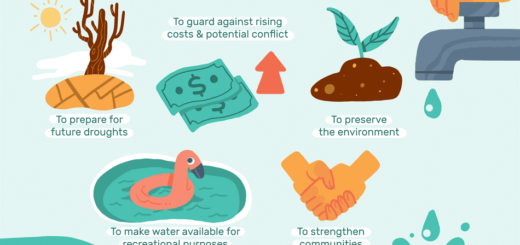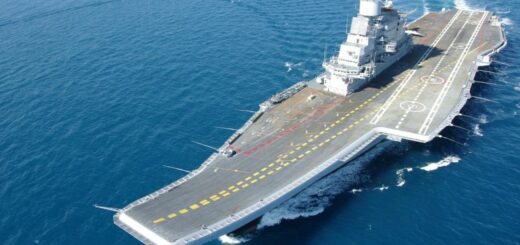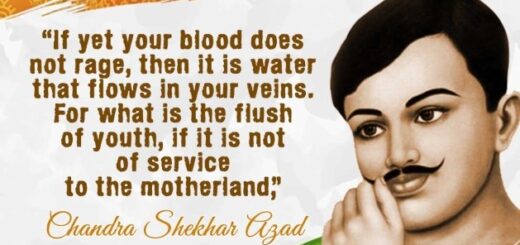National Current Affairs – UPSC/IAS Exams- 20th May 2019
RISAT-2B
Topic: Science and Technology
In News: RISAT-2B, will mark the resumption of a vital ring of Indian all-seeing radar imaging satellites after seven years.
More on the Topic
- RISAT-2B is to be followed by RISAT-2BR1, 2BR2, RISAT-1A, 1B, 2A and so on.
- When it is cloudy or dark, ‘regular’ remote-sensing or optical imaging satellites — which work like a light-dependent camera cannot perceive hidden or surreptitious objects on the ground.
- Satellites that are equipped with an active sensor, the synthetic aperture radar (SAR), can sense or ‘observe’ Earth in a special way from space day and night, rain or cloud.
- This all-weather seeing feature is what makes them special for security forces and disaster relief agencies.
- A radar imaging satellite is complex to assemble. Interpreting its images is equally complex. ISRO took almost 10 years to realise RISAT-1. It sends much heavier data than plain remote sensing satellites.
- In India radar imaging is used for crop estimation because main crop growing season of kharif is in May-September when it rains and gets cloudy. The data from the satellite is extensively used for forestry, soil, land use, geology and during floods and cyclone.
Source: The Hindu
Masala Bond
Topic: Economy
In News: The Kerala Infrastructure Investment Fund Board issued Masala Bonds to raise funds from the overseas market.
More on the Topic:
- Masala Bonds are rupee-denominated bonds i.e the funds would be raised from overseas market in Indian rupees.
- According to RBI, any corporate, body corporate and Indian bank is eligible to issue Rupee denominated bonds overseas.
- Indian companies have been raising debt from overseas markets for decades including through bond offerings, those borrowings have been denominated in dollar or other currencies.
- According to RBI, the minimum maturity period for Masala Bonds raised up to Rupee equivalent of USD 50 million in a financial year should be 3 years and for bonds raised above USD 50 million equivalent in INR per financial year should be 5 years.
- The conversion for such bonds will happen at the market rate on the date of settlement of transactions undertaken for issue and servicing of the bonds, including its redemption.
- The term Masala was used by the International Finance Corporation (IFC) to evoke the culture and cuisine of India.
- Unlike dollar bonds, where the borrower takes the currency risk, masala bond makes the investors bear the risk.
- The first Masala bond was issued by the World Bank- backed IFC in November 2014 when it raised 1,000 crore bond to fund infrastructure projects in India.
- Later in August 2015 International Financial Cooperation for the first time issued green masala bonds and raised Rupees 3.15 Billion to be used for private sector investments that address climate change in India.
Source: The Hindu
Buddha Purnima
Topic: Culture
In News: Buddha Purnima was celebrated recently.
More on the topic:
- Buddha’s birthday is traditionally celebrated in most of East Asia to commemorate the birth of the Prince Siddhartha Gautama, later the Gautama Buddha and founder of Buddhism.
- It is also celebrated in South and Southeast Asia as Vesak which also acknowledges the enlightenment and death of the Buddha.
- According to the Theravada Tripitaka scriptures (from Pali, meaning “three baskets”), Gautama was born c. 563/480 BCE in Lumbini in modern-day Nepal, and raised in the Shakya capital of Kapilvastu, in the present day Tilaurakot, Nepal.
- At the age of thirty five, he attained enlightenment (nirvana) underneath a Bodhi tree at Bodhgaya (modern day India).
- He delivered his first sermon at Sarnath, India. At the age of eighty, he died at Kushinagar, India.
- The exact date of Buddha’s birthday is based on the Asian lunisolar calendars. The date for the celebration of Buddha’s birthday varies from year to year in the Western Gregorian calendar, but usually falls in April or May. In leap years it may be celebrated in June.
Buddhism and India:
- India is the land where the Buddha attained enlightenment (nirvana) at Bodhgaya and established Buddhism.
- Buddha spent majority of his life in what is now modern day India. Some of the holiest sites associated with Buddha’s life include Bodhgaya (place of enlightenment), Sarnath (site of first sermon), Sravasti and Rajgir (site where Buddha spent the greater part of his monastic life and delivered majority of his discourses), and Kushinagar (site where Buddha attained Parinirvana and passed away).
- Under Emperor Ashoka, Buddhism spread from India to other nations.
Source: The Hindu
Lokpal
Topic: Polity and Governance
In News: The Website of the Lokpal was inaugurated by the Chairperson, Justice Shri Pinaki Chandra Ghose in presence of all the Members of Lokpal.
More on the Topic
- The Website has been developed by NIC and provides the basic information with respect to the working and functioning of the Lokpal. The Website can be accessed at http://lokpal.gov.in.
- The Lokpal is the first institution of its kind in independent India, established under the Lokpal and Lokayuktas Act, 2013 to inquire and investigate into allegations of the corruption against public functionaries who fall within the scope and ambit of the above Act.
Highlights of the Lokpal Act of 2013
- The Act allows setting up of anti-corruption ombudsman called Lokpal at the Centre and Lokayukta at the State-level.
- Composition: The Lokpal will consist of a chairperson and a maximum of eight members.
- Applicability: The Lokpal will cover all categories of public servants, including the Prime Minister. But the armed forces do not come under the ambit of Lokpal.
- The Act also incorporates provisions for attachment and confiscation of property acquired by corrupt means, even while the prosecution is pending.
- The States will have to institute Lokayukta within one year of the commencement of the Act.
- The Act also ensures that public servants who act as whistleblowers are protected.
- The person who is to be appointed as the chairperson of the Lokpal should be either the former Chief Justice of India Or the former Judge of Supreme Court Or an eminent person with impeccable integrity and outstanding ability, having special knowledge and expertise of minimum 25 years in the matters relating to anti-corruption policy, public administration, vigilance, finance including insurance and banking, law and management.
- Out of the maximum eight members, half will be judicial members. Minimum fifty per cent of the Members will be from SC / ST / OBC / Minorities and women.
- The judicial member of the Lokpal should be either a former Judge of the Supreme Court or a former Chief Justice of a High Court.
- The non-judicial member should be an eminent person with impeccable integrity and outstanding ability, having special knowledge and expertise of minimum 25 years in the matters relating to anti-corruption policy, public administration, vigilance, finance including insurance and banking, law and management.
Model Mains Question: Critically examine the issues involved in the functioning of Lokpal.
Source: PIB
Medium Range Surface to Air Missile (MRSAM)
Topic: Science and Technology
In News: The Indian Navy achieved a significant milestone in enhancing its Anti Air Warfare Capability with the maiden cooperative engagement firing of the Medium Range Surface to Air Missile (MRSAM).
More on the Topic:
- The firing was undertaken on the Western Seaboard by Indian Naval Ships Kochi and Chennai wherein the missiles of both ships were controlled by one ship to intercept different aerial targets at extended ranges. The firing trial was carried out by the Indian Navy, DRDO and Israel Aerospace Industries.
- The successful conduct of the test has been the result of sustained efforts by all stakeholders over the years. DRDL Hyderabad, a DRDO Lab, has jointly developed this missile in collaboration with Israel Aerospace Industries. The MRSAM has been manufactured by Bharat Dynamics Limited, India.
- These Surface to Air Missiles are fitted onboard the Kolkata Class Destroyers and would also be fitted on all future major warships of the Indian Navy.
- With the successful proving of this cooperative mode of engagement, the Indian Navy has become a part of a select group of Navies that have this niche capability
- This capability significantly enhances the combat effectiveness of the Indian Navy thereby providing an operational edge over potential adversaries.
Source: PIB
‘Divergence’ in bad loan
Topic: Economy
In News: At least three public sector banks that have reported earnings for the January-March quarter have mentioned ‘divergence’ in bad loan recognition and have made provisions for such loans.
More on the Topic:
- Divergence takes place when the Reserve Bank of India (RBI) finds that a lender has under-reported (or not reported at all) bad loans in a particular year and hence asks the lender to make disclosures if under-reporting is more than 10% of bad loans or the provisioning.
- Three state-run banks — Union Bank of India, Indian Bank and Central Bank of India — had reported divergence while announcing the results. In all these banks, divergence was spotted for the financial year 2017-18.
NPA Classification:
- Since the date of classification as NPA had been pushed back, the banks had to make higher provisioning due to the ageing factor. In the first stage of NPA, which is the ‘sub-standard’ category, 15-20% provision is required and for next category, which is ‘doubtful’, a 40% provision is required.
NPA is a loan or an advance where,
- Interest and/ or instalment of principal remain overdue for a period of more than 90 days in respect of a term loan.
- The account remains ‘out of order’ in respect of an Overdraft/Cash Credit (OD/CC).
- The bill remains overdue for a period of more than 90 days in the case of bills purchased and discounted.
- The instalment of principal or interest thereon remains overdue for two crop seasons for short duration crops.
- The instalment of principal or interest thereon remains overdue for one crop season for long duration crops.
- The amount of liquidity facility remains outstanding for more than 90 days, in respect of a securitisation transaction undertaken in terms of guidelines on securitisation dated February 1, 2006.
- In respect of derivative transactions, the overdue receivables representing positive mark-to-market value of a derivative contract, if these remain unpaid for a period of 90 days from the specified due date for payment.
Source: The Hindu


















